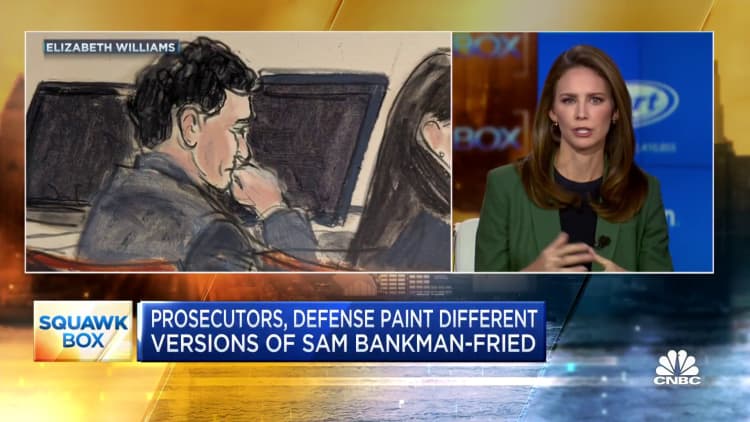[ad_1]
Indicted FTX founder Sam Bankman-Fried arrives at the United States Courthouse in New York City, July 26, 2023.
Amr Alfiky | Reuters
The government is paying for pizza and Uber rides home for the 12 jurors in lower Manhattan who will decide the fate of Sam Bankman-Fried.
In court on Thursday, U.S. District Judge Lewis Kaplan told jurors he would keep them until 8:15 p.m. as the criminal trial of the FTX founder enters its final stretch. Kaplan had previously hinted at the expedited timeline, while reassuring the jury that he wasn’t rushing anyone.
Closing arguments wrapped up on Wednesday, followed by the prosecution’s rebuttal Thursday morning. Now the trial moves to jury instructions and then deliberations.
No proceedings are scheduled for Friday due in part to a juror’s conflicting schedule. Should deliberations last beyond Thursday evening, they would resume on Monday.
Bankman-Fried, the 31-year old son of two Stanford legal scholars, faces a potential life sentence if convicted on charges, which include wire fraud, securities fraud and money laundering, all tied to the collapse late last year of FTX and sister hedge fund Alameda Research. He pleaded not guilty.
The trial, which began about a month ago, has largely pitted the testimony of Bankman-Fried’s former close friends and top lieutenants against the sworn statements of their former boss and ex-roomate.
The government’s key witnesses included Caroline Ellison, Bankman-Fried’s ex-girlfriend and the former head of Alameda, FTX co-founder Gary Wang, who was Bankman-Fried’s childhood friend from math camp, and former FTX engineering chief Nishad Singh. All three pleaded guilty to multiple charges and cooperated as witnesses for the prosecution.
FTX founder Sam Bankman-Fried is questioned by defense lawyer Mark Cohen as he testifies in his fraud trial over the collapse of the bankrupt cryptocurrency exchange, at federal court in New York City, U.S., October 30, 2023 in this courtroom sketch.
Jane Rosenberg | Reuters
In the government’s rebuttal Thursday morning to the defense’s closing argument, Assistant U.S. Attorney, Danielle Sassoon reminded the jury about the heart of the case. Billions of dollars of customer money from Bankman-Fried’s crypto exchange went missing.
Telling customers that their assets are safe and then taking that money and using it for personal and other company expenditures is not a reasonable business decision — but fraud, Sassoon said.
The defendant had the “arrogance to think that he could get away with fraud,” she said. He wanted influence and power, and Sassoon referred to the testimony of a witness, who said Bankman-Fried thought he could someday be president.
Sassoon responded to the defense’s argument that cooperating witnesses were incentivized to blame Bankman-Fried in order to lessen their sentence, calling those allegations “outrageous.”
“If you believe Caroline, the defendant is guilty,” Sassoon told the jury in her rebuttal. “If you believe Gary, the defendant is guilty. If you believe Nishad, the defendant is guilty.”
Sassoon added that Ellison, as a co-conspirator, operated in dread and fear waiting for customers to realize their money was gone.
One of Bankman-Fried’s main defenses was that he made mistakes, primarily related to risk management and in not hiring a chief risk officer. Sassoon says that’s not a defense — it was a strategy.
“If you’re embezzling money, of course you’re not going to have a chief risk officer,” she said.
Sassoon ended by telling jurors that Bankman-Fried thought he could fool customers, reporters, the public and now them.
“Don’t fall for it,” she said. “Find him guilty.”
After Sassoon wrapped up her rebuttal, the judge moved into one of the trial’s final stages, a step known as charging the jury. The multi-hour process involves reading jurors a 60-page set of instructions. When he’s done, the jury will enter deliberations until they land on a verdict.
WATCH: Prosecutors, defense paint different versions of Sam Bankman-Fried

[ad_2]

